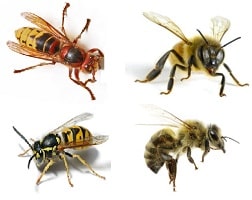What Is A Cell? – Definition, Structure, Types, Functions
The cell is the fundamental unit of living beings that contains all the necessary material to maintain vital processes such as growth, nutrition and reproduction. It is found in a variety of shapes, sizes and functions.
The cells are classified into prokaryotic and eukaryotic cells. The prokaryotic cells are characterized by not having a core defined therein, whereas eukaryotic cells have their content within a nuclear membrane.
There are organisms such as bacteria and protozoa constituted by a cell (unicellular organisms). The most complex multicellular or multicellular organisms are constituted by a greater number and diversity of cells.
It is believed that all cells evolved from a common progenitor, since they all have similar structures and molecules.
Structure of cells
In the cells in general, different structures can be distinguished with the optical microscope: nucleus, cytoplasmic membrane and cytoplasm.
Cell nucleus
The cell nucleus is surrounded by a nuclear envelope, it contains the genetic material of eukaryotic cells . It is the command center of eukaryotic cells. In the prokaryotic cells there is no nucleus, so the genetic material is dispersed.
Plasma membrane
The plasma membrane is a barrier with selective permeability , that is, regulates the entry and exit of material from the cell and also receives information from the outside cell. Nutrient, water and oxygen enter through the plasma membrane, leaving carbon dioxide and other substances.
The cytoplasm is the interior of the cell between the nucleus and the plasma membrane . Here is the machinery of production and maintenance of the cell. It is constituted by a gelatinous material called hialoplasma.
Organelles of the cytoplasm
In the cytoplasm are membranous structures known as organelles. The organelles are responsible for various cellular activities, such as storage, digestion, cellular respiration, material synthesis and excretion, that is, they are responsible for the maintenance of cellular life.
Among the organelles we can highlight:
- Mitochondria : is the energy factory of cells. Here cellular respiration takes place and the energy that the cell requires for its activities is produced.
- Ribosomes : they are the center of production of proteins. They are the organelles essential for cell growth and regeneration.
- Endoplasmic reticulum : formed by a vast network of channels and flattened membranous bags called cisterns. There are two types of endoplasmic reticulum: rough and smooth . When ribosomes are found on the outer surface of the endoplasmic reticulum, it is said to be a rough endoplasmic reticulum and in it membrane proteins and secretory proteins are synthesized. Lipids are synthesized in the smooth endoplasmic reticulum.
- Golgi apparatus : is the cell’s distribution center, responsible for classifying, labeling, packaging and distributing proteins and lipids in secretory vesicles. It also produces lysosomes.
- Lysosomes : are responsible for intracellular digestion.
- Peroxisomes : organelles responsible for the oxidation of fatty acids and the degradation of hydrogen peroxide.
- Centriolos : cylindrical structures that participate in cell division.
- Vacuoles : vesicles, small bags that store and transport enzymes and ions.
- Chloroplasts : organelles responsible for photosynthesis in plant cells.
Difference between animal and vegetable cells
In plant cells there is, on the outside of the plasma membrane, a cell wall, composed of cellulose. The plant cells contain one or more giant vacuoles that are the storage sites of water, ions and nutrients. Chlorophyll is the chlorophyll that absorbs light in the process of photosynthesis .
Organelles and their functions in animal and plant cells
| Organelle | Functions | Animal | Vegetable |
|---|---|---|---|
| Mitochondria | Cell respiration; energy generation. | I presented | I presented |
| Ribosome | Protein synthesis | I presented | I presented |
| Endoplasmic reticulum | Synthesis and transport of proteins. | I presented | I presented |
| Golgi apparatus | Processing of proteins; synthesis of sugars and lipids. | I presented | I presented |
| Lysosomes | Intracellular digestion | I presented | I presented |
| Peroxisomes | Oxidation of fatty acids. | I presented | I presented |
| Centriolos | Cellular division. | I presented | I presented |
| Vacuola | Storage and transport. | I presented | I presented |
| Chloroplasts | Photosínteis. | Absent | I presented |
| Cellular wall | Structure and stability | Absent | I presented |

